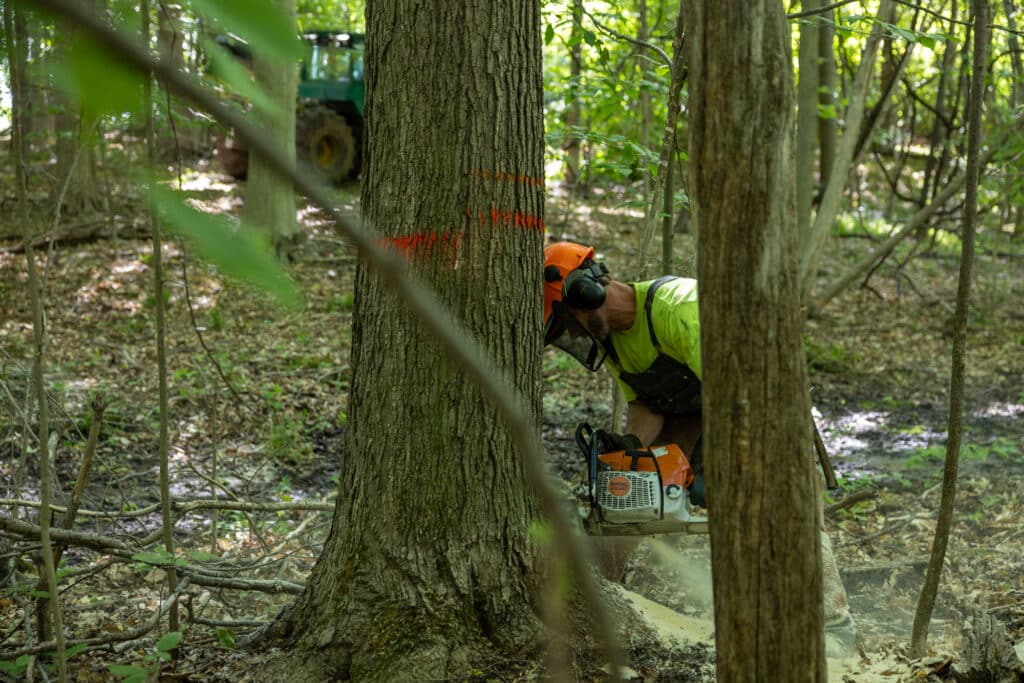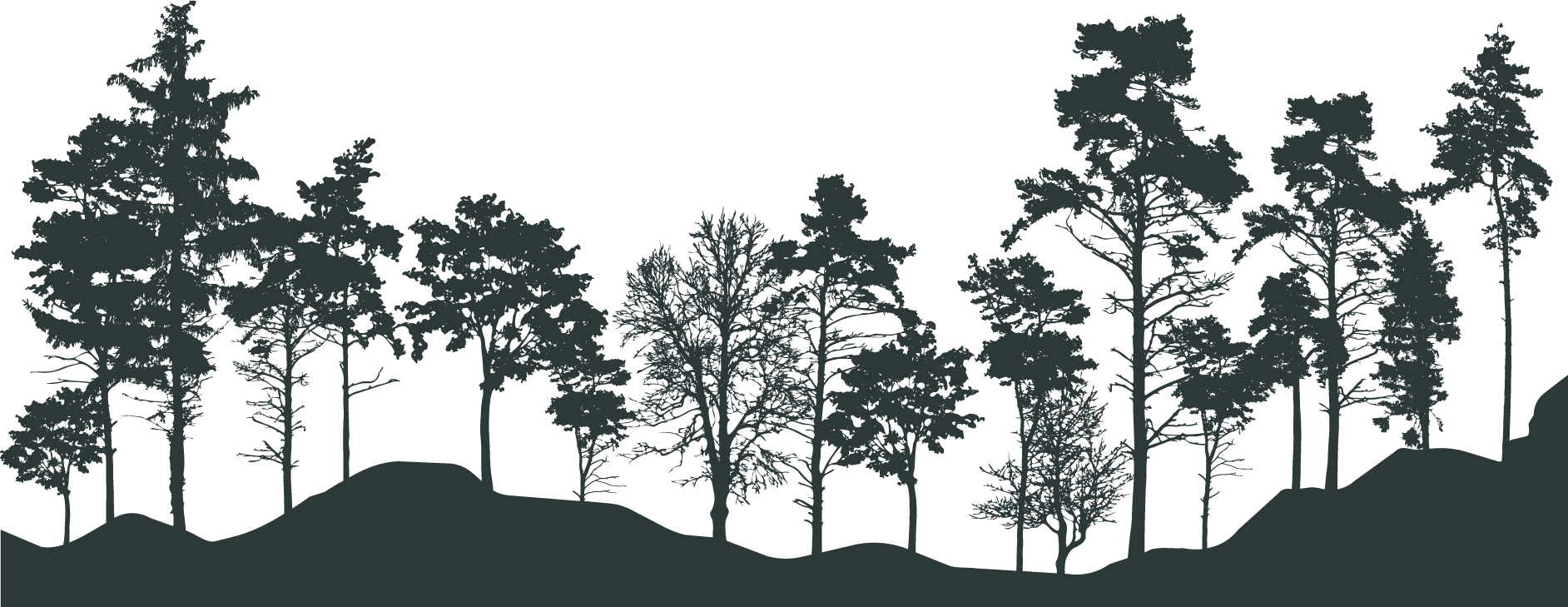Timber harvesting is an essential part of forest management, allowing you to maintain a healthy, productive woodlot while generating economic value. However, you’ll want to choose a harvesting method carefully because it plays an important role in the long-term sustainability of your forest.
At Buskirk Lumber, we prioritize sustainable forestry practices, which is why we rely on selective cutting (or selective harvesting) as our preferred timber harvesting method. Unlike clear-cutting, which removes large sections of trees at once, selective harvesting is a method that carefully removes only certain trees while preserving the overall structure and health of your forest.
Keep reading to explore the differences between clear-cutting and selective cutting and learn why selective cutting is the best choice for your woodlot.
Timber Harvesting Methods
Timber harvesting refers to the process of cutting and removing trees from a forest or woodlot for commercial or ecological purposes. The two main harvesting methods are clear-cutting and selective cutting, each with distinct impacts on the forest ecosystem.
1. Clear Cutting
Clear-cutting is a harvesting method where most or all trees in a designated area are removed at once, regardless of their size, age, or species. This approach is often used for:
- Commercial development – Clearing land for agricultural, industrial, or residential projects.
- Disease Control – Preventing the spread of pests or tree diseases in heavily affected areas.
- Reforestation Efforts – Clearing old growth to plant new, fast-growing species.
However, clear-cutting is widely criticized for its negative environmental impacts, including:
- Soil Erosion – The removal of tree root systems leads to soil instability.
- Habitat Destruction – Wildlife loses crucial shelter and food sources.
- Water Quality Issues – Increased runoff can introduce sediment and pollutants into waterways.
At Buskirk Lumber, we do not use clear-cutting for forest management because of its harmful effects on ecosystems. Instead, we focus on a more sustainable and responsible approach: selective cutting.
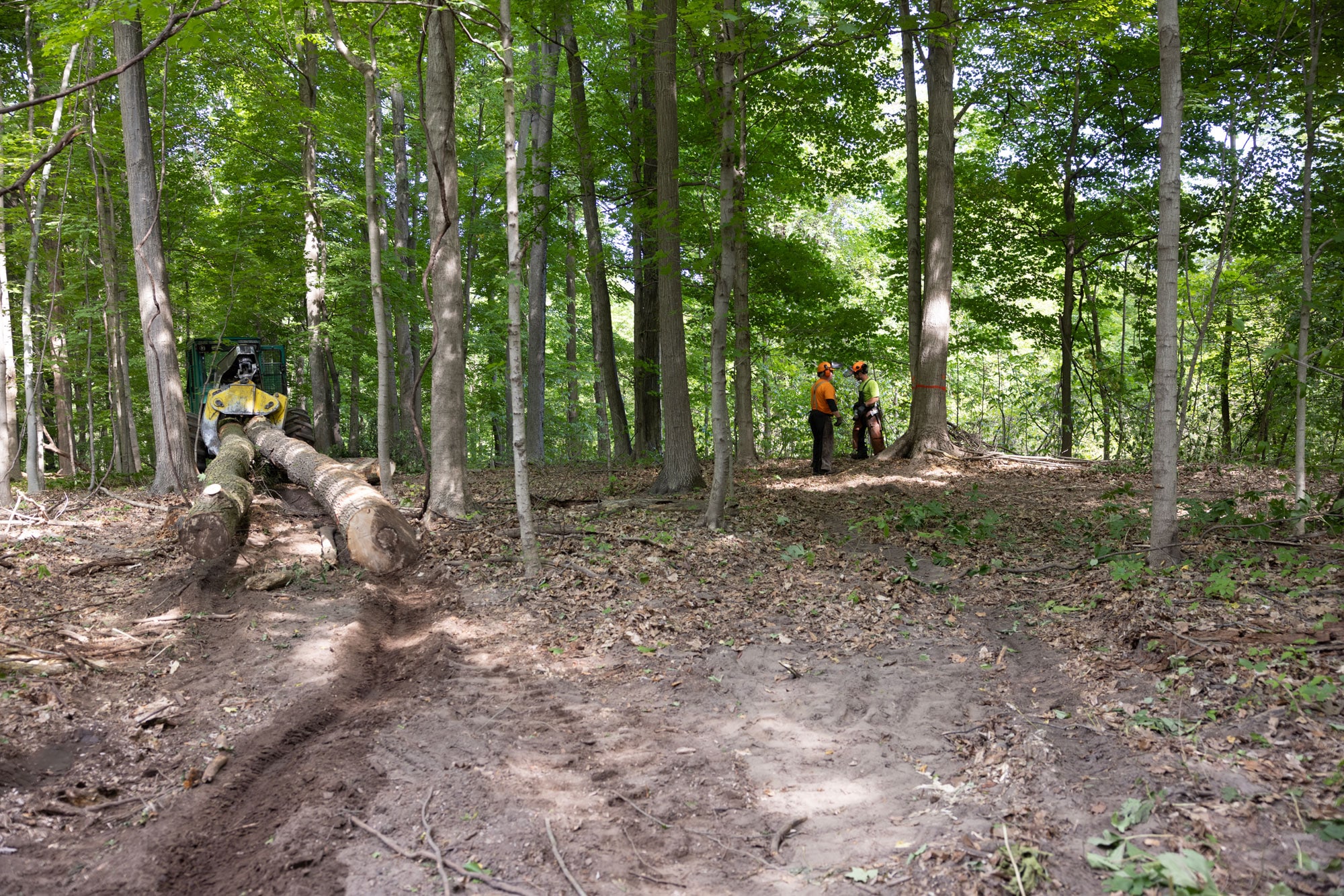
2. Selective Cutting: A Sustainable Alternative
What is Selective Cutting?
Selective cutting is a timber harvesting method that removes only specific trees based on factors such as size, age, species, and health. This approach ensures that forests remain productive and ecologically balanced.
The Benefits of Selective Cutting
- Maintains Forest Structure – Instead of clearing entire sections of trees, selective harvesting leaves the majority of the woodlot intact, preserving its natural appearance and ecosystem.
- Encourages Natural Regeneration – By thinning out mature trees, younger saplings receive more sunlight, water, and nutrients, allowing for healthy forest regeneration.
- Minimizes Soil Disturbance – Since only a portion of trees are removed at a time, soil erosion and compaction are kept to a minimum, protecting the integrity of the forest floor.
- Supports Wildlife Habitats – Selective cutting promotes biodiversity by maintaining tree cover, providing shelter, and supporting a mix of tree species for various wildlife.
- Increase Carbon Sequestration – Unlike clear-cutting, which significantly reduces a forest’s ability to capture carbon, selective harvesting helps maintain the forest’s role as a carbon provider.
- Provides Long-Term Economic Returns – By carefully selecting and harvesting only the most valuable trees, landowners can enjoy continuous revenue from their woodlot while ensuring future growth for generations to come.
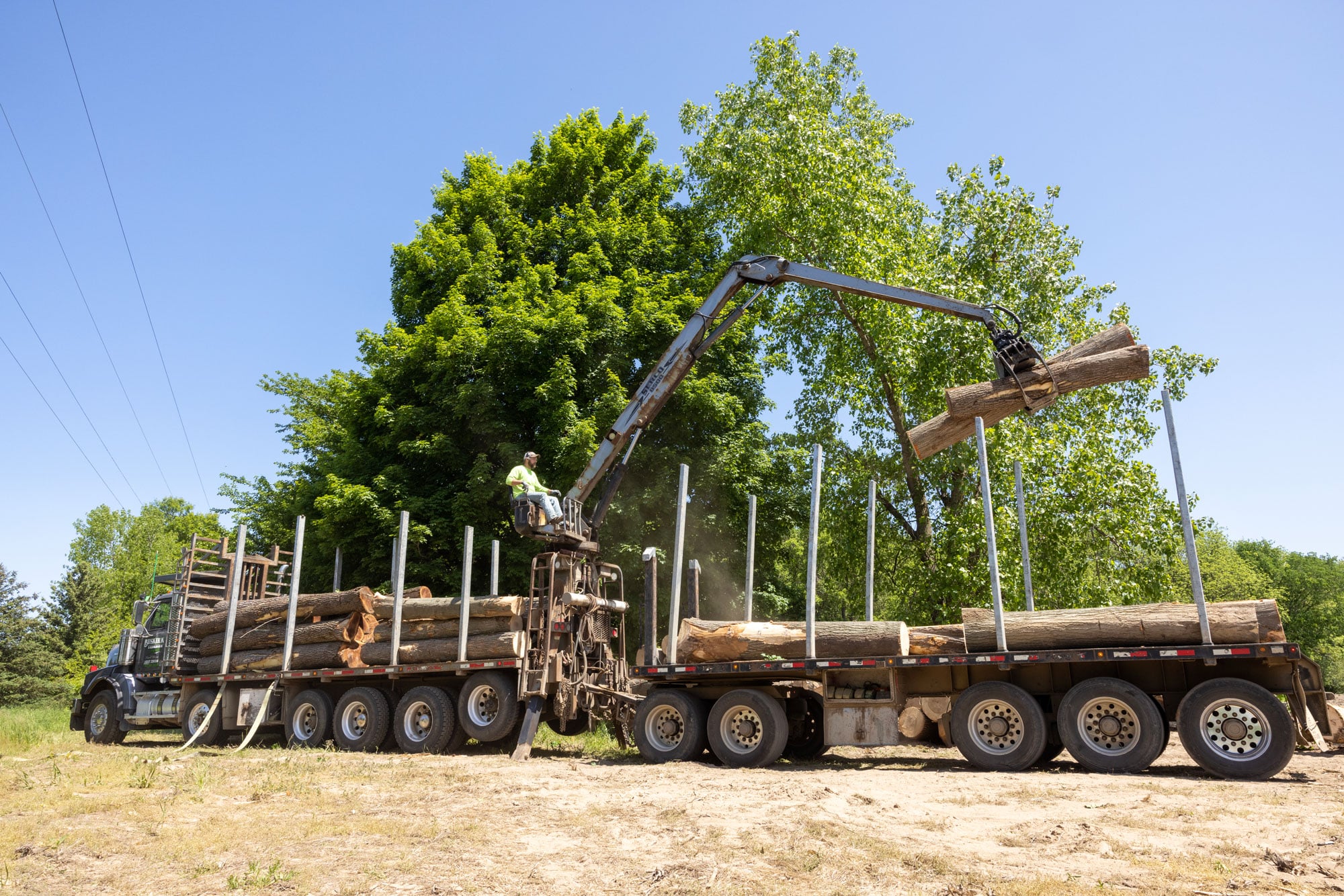
How Buskirk Lumber Implements Selective Cutting
At Buskirk Lumber, we follow a selective harvesting approach to ensure sustainable forest management. Our process involves:
- Evaluating Your Woodlot – We assess tree health, species distribution, and overall stand quality.
- Developing a Harvest Plan – Based on our assessment, we determine which trees should be removed to maximize forest health and productivity. As experts, we will never suggest or recommend cutting down trees that aren’t necessary or are below our size requirements.
- Careful Tree Removal – Using precision harvesting techniques, we selectively cut trees with minimal disturbance to the surrounding area.
- Long-Term Forest Management – We help landowners set up a sustainable harvest schedule, ideally every 7-10 years, to maintain a productive woodlot.
Additional Benefits of Our Selective Harvesting Approach
- Wildlife Benefits – By encouraging regrowth on the forest floor, we enhance food and shelter for local wildlife, including deer, birds, and other species.
- Ecological Benefits – Our method mimics natural forest succession, ensuring trees have access to adequate resources without excessive competition.
- Forest Diversification – A mix of tree ages and species creates a healthier, more resilient ecosystem.
- Economic Benefits – Landowners receive steady income by selectively harvesting high-value trees while preserving long-term timber potential.
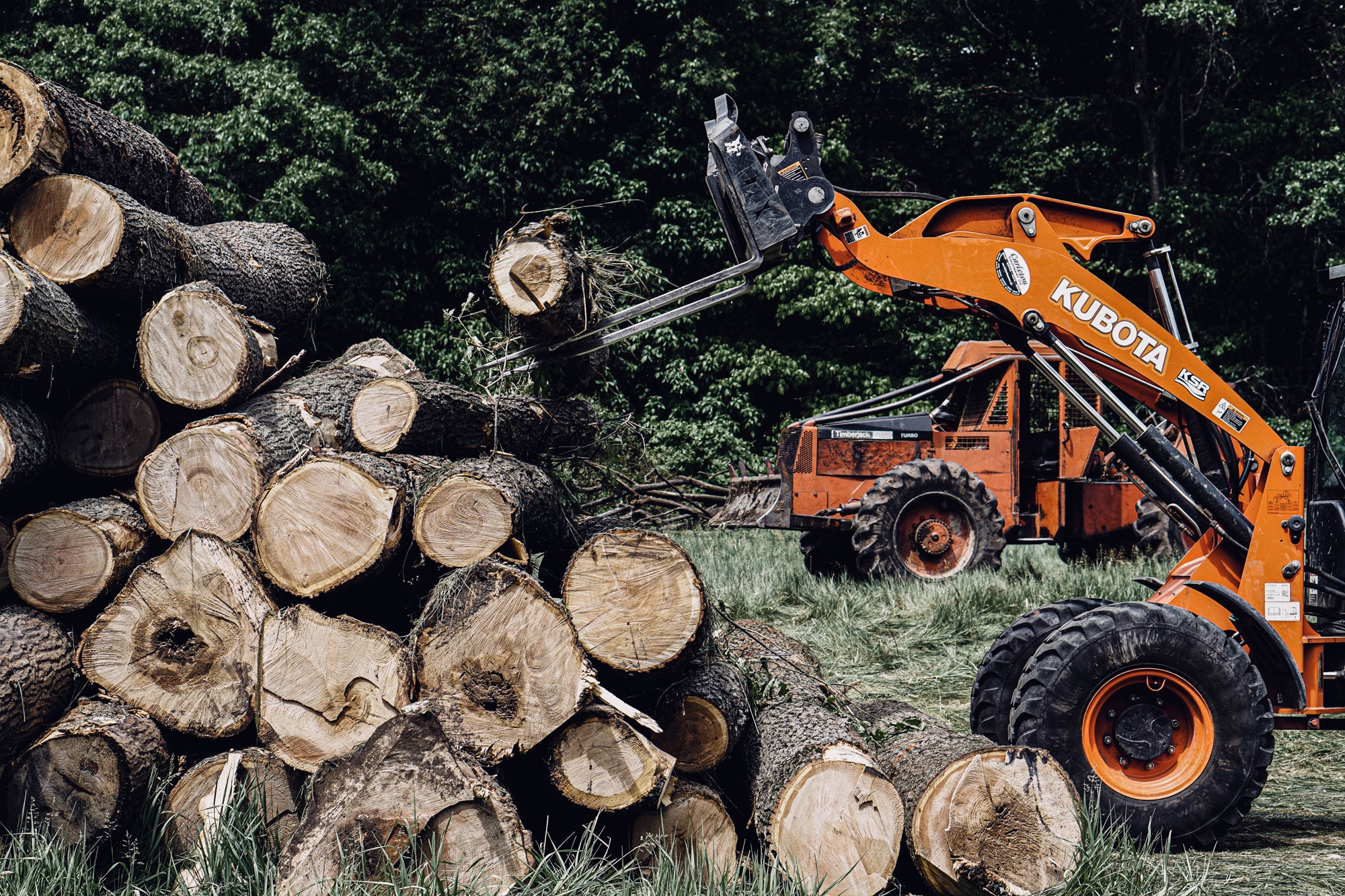
Sustainable Timber Harvesting with Buskirk Lumber
Whether you want to improve your forest’s health, support wildlife, or generate income from your woodlot, Buskirk Lumber is here to help. As standing timber buyers with over 100 years in the industry, we ensure that every timber harvest is carefully planned and executed to protect both your land and the environment.
If you’re a Michigan landowner looking for sustainable timber harvesting solutions, contact us today to learn more about how we can help manage your woodlot.
